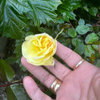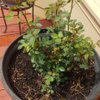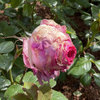Does neem oil control black spot?
Bob_B
14 years ago
Featured Answer
Sort by:Oldest
Comments (16)
michaelg
14 years agolast modified: 9 years agohenry_kuska
14 years agolast modified: 9 years agoRelated Professionals
Danbury Landscape Architects & Landscape Designers · Anderson Landscape Contractors · Arlington Landscape Contractors · Canton Landscape Contractors · Williamsburg Landscape Contractors · Edmond Landscape Contractors · Andover Landscape Contractors · Dickinson Landscape Contractors · Edinburg Landscape Contractors · Indianapolis Landscape Contractors · Lehigh Acres Landscape Contractors · Norristown Landscape Contractors · North Highlands Landscape Contractors · Peachtree City Landscape Contractors · Forest Hill Landscape Contractorshelmut_ii
14 years agolast modified: 9 years agorochesterroseman
14 years agolast modified: 9 years agohenry_kuska
14 years agolast modified: 9 years agohenry_kuska
14 years agolast modified: 9 years agoroseman
14 years agolast modified: 9 years agohenry_kuska
14 years agolast modified: 9 years agojoebar
14 years agolast modified: 9 years agomichaelg
14 years agolast modified: 9 years agonastarana
10 years agolast modified: 9 years agojjstatz
10 years agolast modified: 9 years agojjstatz
10 years agolast modified: 9 years agojjstatz
10 years agolast modified: 9 years agojjstatz
10 years agolast modified: 9 years ago
Related Stories

INSIDE HOUZZHow Much Does a Remodel Cost, and How Long Does It Take?
The 2016 Houzz & Home survey asked 120,000 Houzzers about their renovation projects. Here’s what they said
Full Story
BATHROOM DESIGNSpotted: Refrigerators in the Bathroom
You read that right. Before you protest, here are seven good reasons why people are chilling in the bath
Full Story
MOST POPULAR11 Reasons to Paint Your Interior Doors Black
Brush on some ebony paint and turn a dull doorway into a model of drop-dead sophistication
Full Story
REMODELING GUIDESBathroom Workbook: How Much Does a Bathroom Remodel Cost?
Learn what features to expect for $3,000 to $100,000-plus, to help you plan your bathroom remodel
Full Story
KITCHEN DESIGN12 Items Worth a Spot on Your Kitchen Counter
Keep these useful tools and accessories out in the open to maintain high function without spoiling the view
Full Story
HOUSEKEEPINGOut, Darn Spot! Tips for Removing Carpet Stains
Know the right solutions and when to use them to prevent stains from pets, soda, chocolate, blood and more
Full Story
COLOR10 Pair-Ups for Black in the Kitchen
Combine black with other colors to add drama, polish and modernity. It also can make a kitchen look more spacious
Full Story
BLACKCooking With Color: When to Use Black in the Kitchen
Consider sampling Caviar or Cracked Pepper on your kitchen walls or cabinets for richness and impact
Full Story
BATHROOM MAKEOVERSTake a Peek at This Sexy, Mostly Black Bathroom
The luxurious master en suite (with screens and more for privacy) is just right for a penthouse in Australia
Full Story
HEALTHY HOMEWhat to Know About Controlling Dust During Remodeling
You can't eliminate dust during construction, but there are ways to contain and remove as much of it as possible
Full StoryMore Discussions










jjstatz